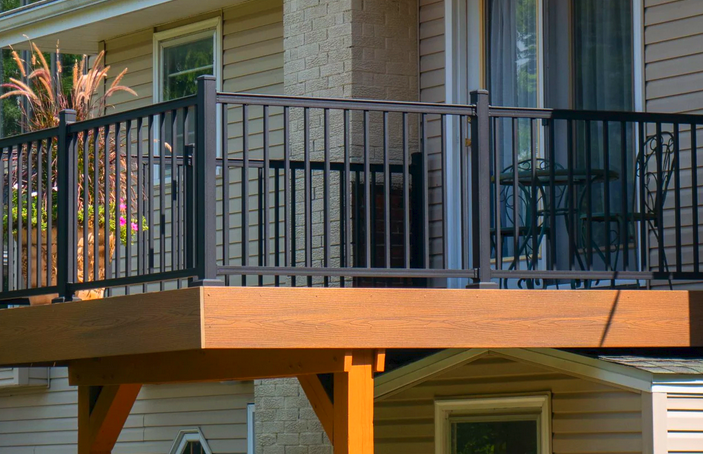Balcony Aluminum Railing: Enhancing Safety and Aesthetics in Outdoor Spaces
Balcony aluminum railings have become a popular choice for modern architecture and outdoor living spaces due to their durability, versatility, and aesthetic appeal. These railings provide both safety and visual enhancement, making them an integral part of balcony designs.
Balcony Aluminum Railing
What are Balcony Aluminum Railings?
Balcony aluminum railings are constructed using aluminum, a lightweight yet robust metal known for its resistance to corrosion and weather elements. The aluminum profiles are typically extruded, creating various shapes and styles of railings. These railings are designed to comply with building codes and provide a safe and functional barrier on balconies, decks, and other elevated platforms.
Types of Balcony Aluminum Railings
- Horizontal Railings: These railings feature horizontal bars or slats running parallel to the balcony floor. They offer a clean and minimalistic look while maintaining safety and functionality.
- Vertical Railings: Vertical railings consist of vertical balusters or posts evenly spaced along the railing’s length. This design provides a classic and elegant aesthetic, creating a sense of height and separation.
- Mixed Railings: Mixed railings combine horizontal and vertical elements, creating a visually appealing and structurally stable design. The combination of bars and balusters adds depth and dimension to the railing system.
- Glass Railings: Glass railings are a contemporary option that offers unobstructed views and a sleek appearance. They are made of tempered glass panels secured to the aluminum framework, providing a modern and sophisticated touch to balconies.

Applications of Balcony Aluminum Railings
- Residential Buildings: Balcony aluminum railings are commonly used in residential buildings, including apartments, condominiums, and private homes. They ensure safety and provide a visually appealing element to balconies, terraces, and decks.
- Commercial Buildings: Commercial buildings such as offices, hotels, and restaurants often incorporate balcony aluminum railings to create safe and stylish outdoor spaces for guests and visitors.
- Public Areas: Public areas, such as parks, plazas, and walkways, often feature balcony aluminum railings to provide safety barriers and add aesthetic charm to the surroundings.
Advantages of Balcony Aluminum Railings
- Durability: Aluminum is a highly durable metal that is resistant to corrosion, rust, and weathering. This makes aluminum railings ideal for outdoor applications, as they can withstand harsh weather conditions without compromising their integrity.
- Strength: Despite their lightweight nature, aluminum railings are exceptionally strong and can withstand significant forces without bending or buckling. This makes them a reliable safety barrier for balconies and elevated platforms.
- Low Maintenance: Aluminum railings require minimal maintenance. Unlike wooden or iron railings, they do not need regular painting or sealing. Simply cleaning the railings with mild detergent and water is usually sufficient to keep them looking their best.
- Versatility: Balcony aluminum railings come in various styles, shapes, and finishes. This versatility allows architects and designers to integrate them seamlessly into different architectural styles and create unique and personalized balcony designs.
- Safety: Balcony aluminum railings meet stringent safety standards and building codes. They provide a secure barrier that prevents falls and ensures the safety of occupants and visitors.
Balcony aluminum railings combine safety, durability, and aesthetics, making them an excellent choice for various outdoor applications. Their versatility, low maintenance, and resistance to harsh weather conditions make them a popular choice for architects, designers, and homeowners alike. With balcony aluminum railings, it is possible to create safe and visually appealing outdoor spaces that enhance the overall design and functionality of any property.

Bir yanıt yazın